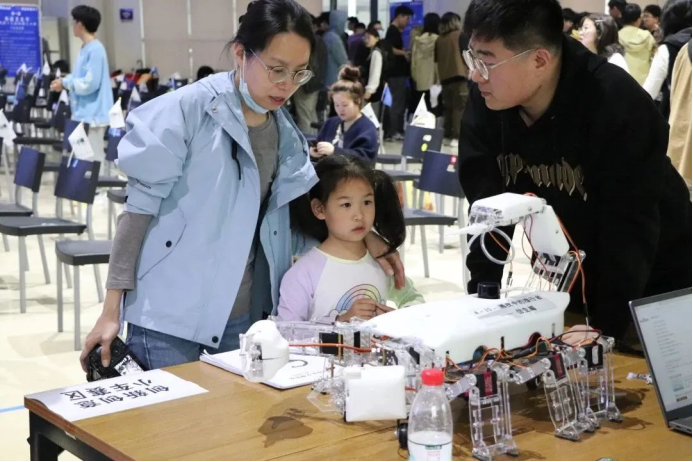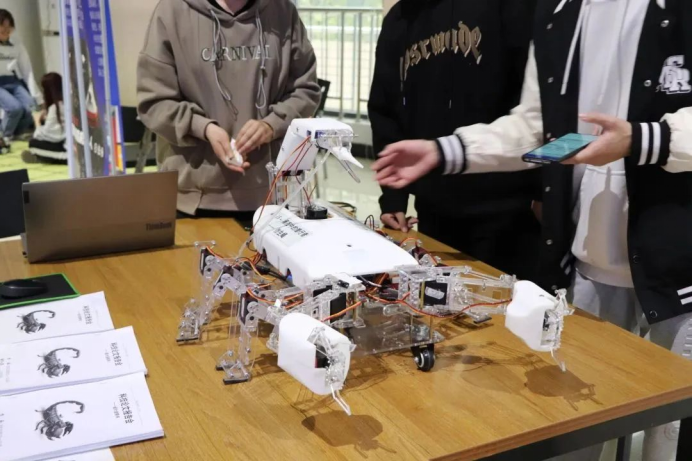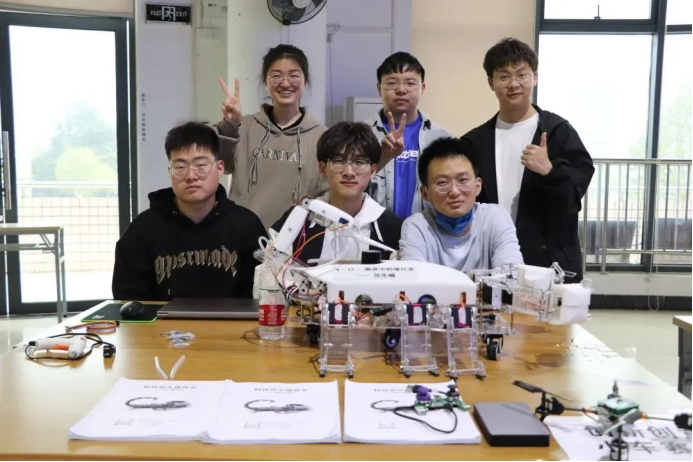On the afternoon of April 2, the launching ceremony of the first “Science and Technology Cultural Festival” and the finals of the 19th Robotics Competition were held in the demo hall on the second floor of the Student Activity Center. Liu Jie, a member of the Standing Committee of the Party Committee and vice president of CUG, Ding Huafeng, dean of the School of Mechanical Engineering and Electronic Information, Zhang Jianhe, deputy dean of the Undergraduate School, Wu Chunming, deputy dean of the Institute of Science and Technology Development, Yu Xiaozhou, deputy secretary of the Party Committee of the School of Mechanical Engineering and Electronic Information, Wen Guojun, deputy dean of the School of Mechanical Engineering and Electronic Information, and You Meng, director of the Graduate Development Support Office of the Graduate Affairs Department under the Party Committee, attended the opening ceremony. The Party and government work leaders of all third-level units of the School of Mechanical Engineering and Electronic Information, representatives of teachers and students, and more than 60 participating teams participated in the event. The opening ceremony was presided over by Li Bo, deputy dean of the School of Mechanical Engineering and Electronic Information.

All rise for the national anthem.
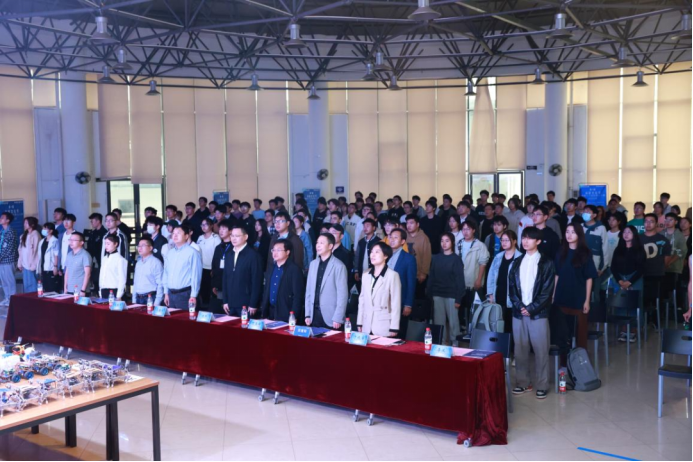
Ding Huafeng delivered a speech. He said that the School of Mechanical Engineering and Electronic Information has a fine tradition of technological innovation, and the Robotics Competition, as a university-level characteristic technology activity organized by the School of Mechanical Engineering and Electronic Information, has cultivated and provided numerous outstanding talents for higher-level scientific and technological innovation competitions. This year, the School of Mechanical Engineering and Electronic Information has integrated existing scientific and technological innovation activities and competitions to create a new brand of the first Science and Technology Cultural Festival, and hoped that this activity would further inspire students to set lofty aspirations, understand the mission of building China into a leader in science and technology, stimulate high morale, maintain a proactive attitude, and strive for technological innovation.

Yu Xiaozhou introduced the Science and Technology Cultural Festival and Robotics Competition. She said that the School of Mechanical Engineering and Electronic Information attaches great importance to the role of innovation and entrepreneurship education in cultivating new engineering talents. In recent years, based on “Robotics Competition”, a scientific and technological innovation brand activity, the school has continuously enriched the entrepreneurship and innovation education activities, built a large number of practical platforms for students, and effectively improved students’ innovative thinking, practical quality and entrepreneurial ability. She pointed out that the First Science and Technology Cultural Festival has organically integrated and iteratively upgraded all science and innovation activities of the school, which will provide students with more targeted and rewarding science and innovation practical experiences.
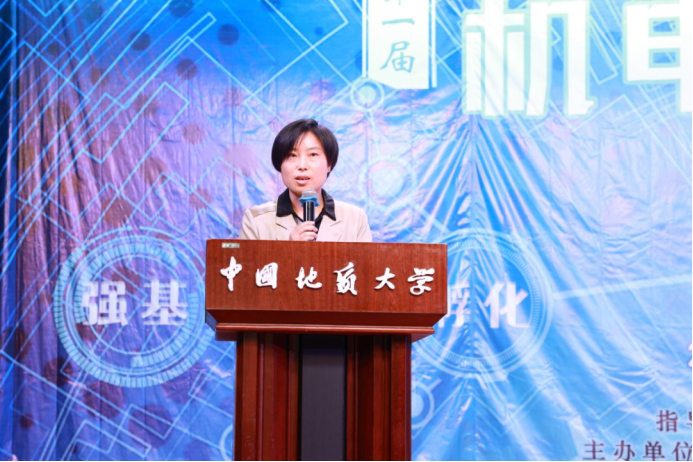
Liu Fuchu, a teacher representative and associate professor of the Department of Mechanical Engineering, delivered a speech. He said that the purpose of the Science and Technology Cultural Festival is to build a platform for students to “integrate science and education, practice and innovation”. Based on his experience in guiding competitions, he proposed three suggestions to the students: first, learn professional knowledge to lay the theoretical foundation for scientific and creative activities; second, consult from multiple sources to understand what is needed for scientific and creative activities; third, play the role of mutual assistance among groups in scientific and technological innovation activities.

Chen Yixuan, a student representative, made a speech. In combination with his experience of participating in the “Internet +” contest for three consecutive years, he shared his experience and insights of participating in the innovation and entrepreneurship competition.
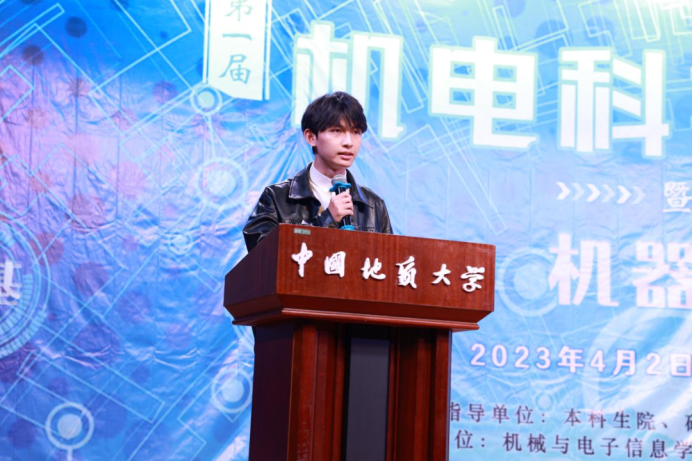
Liu Jie made a concluding speech and declared the opening. He said that the School of Mechanical Engineering and Electronic Information, based on its professional advantages, has formed a distinctive new brand of “Science and Technology Cultural Festival” consisting of a series of activities such as robotics competition, which has radiated and driven students from multiple schools to participate in “innovation and entrepreneurship” practices, effectively expanded new ways of innovation and entrepreneurship education and provided new and powerful support for the overall improvement of talent training quality. He put forward three hopes to the students: the first is to set high goals; the second is to develop excellent skills; the third is to shoulder the mission of the times. He encouraged the students not only to study hard, pursue truth, and bravely climb the scientific research peak, but also to “advance and benefit the world”, keep “Top Priorities of the Country” in heart, and strive to be “the pillar of rejuvenation and the pioneers of building China into a great power.
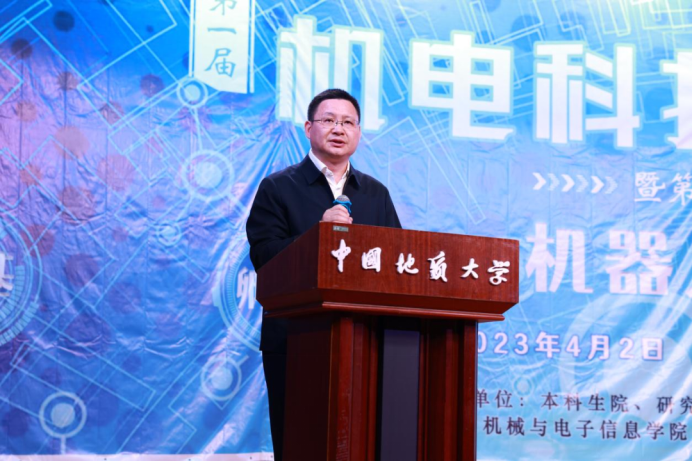
It is reported that the first “Science and Technology Cultural Festival” Innovation and Entrepreneurship Education System Project launched by the School of Mechanical Engineering and Electronic Information, is an important part of the new engineering talent training system of the school, which aims to maximize the effectiveness of scientific and technological innovation education by integrating and upgrading various scientific and technological innovation activities of the school. The “Science and Technology Cultural Festival” of the School of Mechanical Engineering and Electronic Information will run throughout the year, covering multiple contents such as education guidance, platform support, incubation and transformation, innovative practice, and brand building. There will be four major sections, including strong foundation section, incubation section, practice section, and characteristic section, with a total of 16 sub projects and nearly 30 academic and professional competitions.
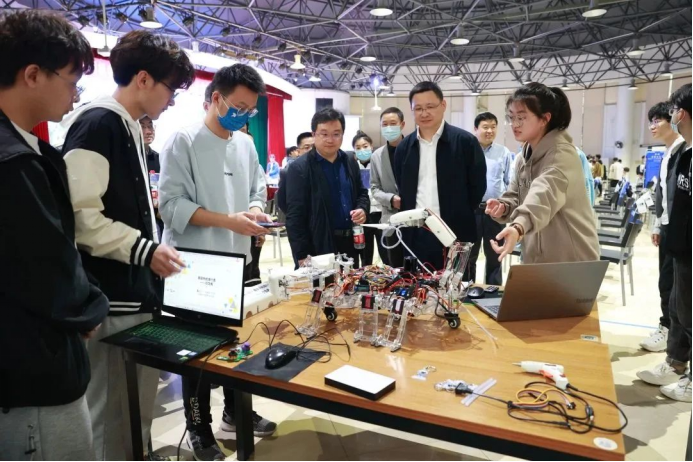

Highlights of the Competition
After the opening ceremony, the finals of the 19th Robotics Competition began. This competition is a special event of the “Science and Technology Cultural Festival”, which took nearly 5 months from the preparation to the final. A total of 186 teams registered and more than 550 students participated in the competition, and nearly 70 teams entered the final, involving bionics, sensor technology, machine vision, mechanical structure design, embedded programming, hardware circuit design and other knowledge areas.
The Robotics Competition is also a featured technology event of the university that combines fun and knowledge. It has been successfully held for 18 times, guiding the students to deepen their professional theoretical knowledge learning, enhance their awareness of science and technology innovation, and cultivate practical hands-on ability in the competition. In recent years, the Robotics Competition has provided a large number of excellent teams for the university to participate in various high-level scientific and technological innovation events, such as the RoboWork, and has achieved notable results.
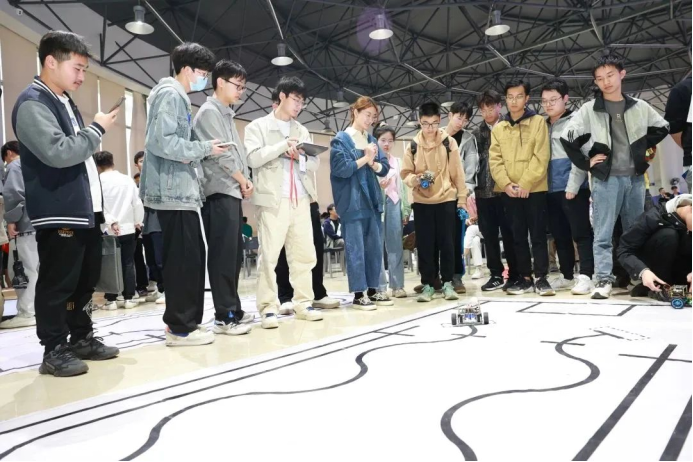
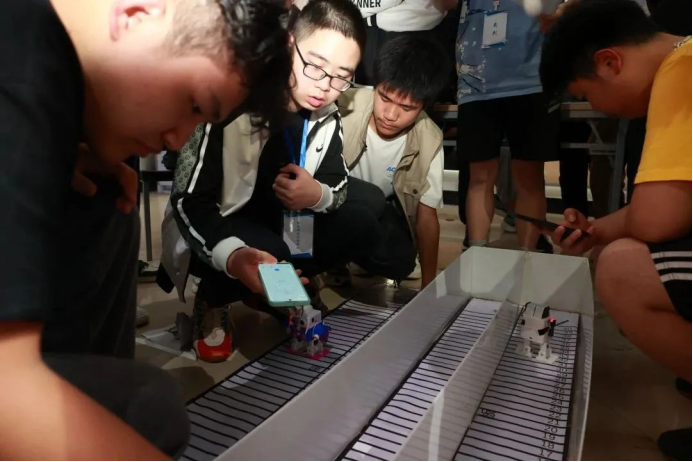
Review of the Competition
01 Biped
(1) Biped walking race
The bipedal walking event requires participants to design a small bipedal walking robot that mimics the track and field events in sports and completes the tasks required by the rules in the racing competition venue. The result of the competition depends on the speed of the robot’s movement. The robot uses battery power and a servo to control its gait. Contestants need to optimize their software and hardware to enable the robot to have the ability to balance walking and stand independently after falling. They also need to use sensors to determine the distance between the robot and the boundary to avoid the robot running off the track.
(2) Biped Sumo wrestling
The bipedal sumo event requires the contestants to design a small bipedal robot that mimics the sumo event in sports, with each team’s robot attempting to push the opponent out of the competition venue. On the sumo wrestling venue, two small sumo robots move in an upright bipedal manner, starting from the designated starting area, and playing a “sumo” match in a circular field. The robot that is first to push its opponent out of the field, or whose opponent goes out of bounds first, wins the game.

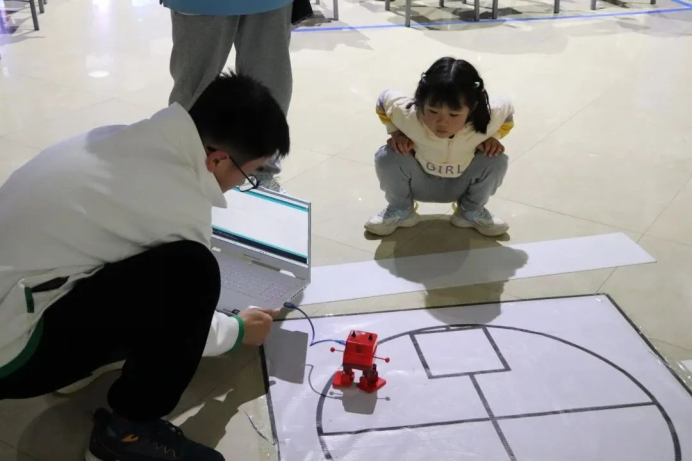
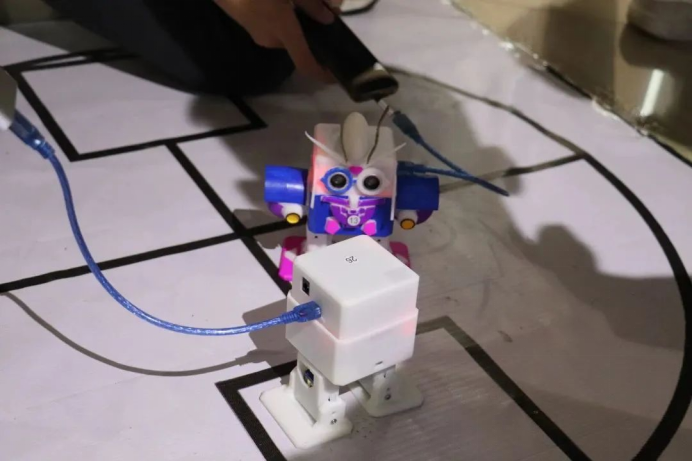
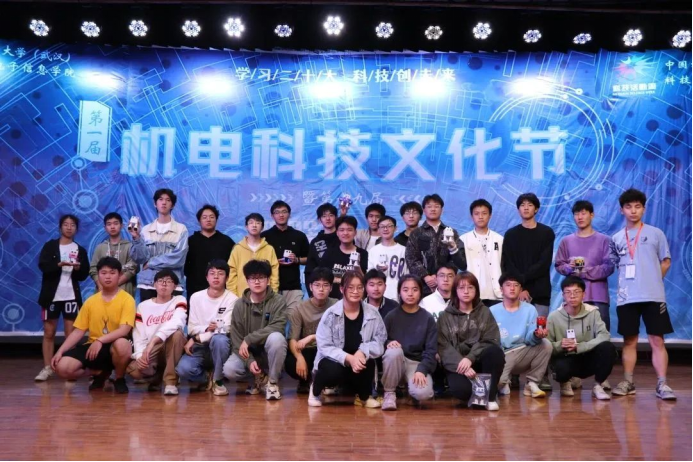
02 Quadrotor
The quadrotor event requires the contestants to design a quadrotor robot which needs to complete the tasks of carrying objects, precise landing, flight obstacle avoidance, etc. The score will be determined based on the accuracy of the robot’s landing position and flight time. The STM32 is selected as the core controller for the quadrotor, and the attitude of its flight is controlled by six-axis attitude sensor data, and the speed of each motor is adjusted by PID algorithm to achieve stable operation. Soaring up and hovering in the air; lifting and landing, swooping and retrograde.

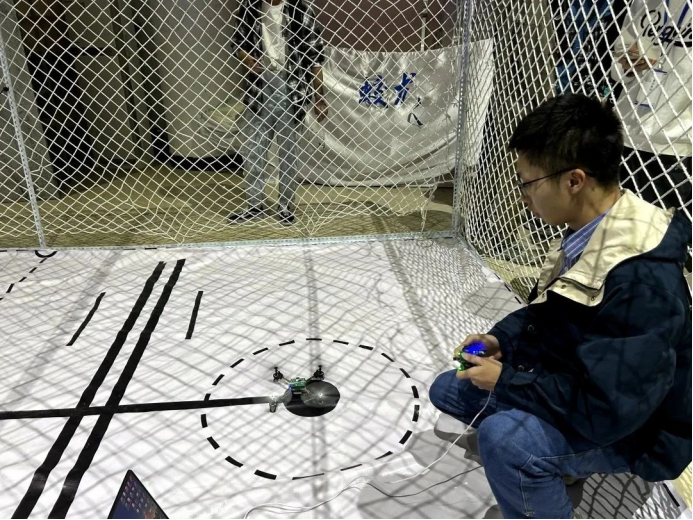

03 Hexapod walking race
The hexapod waling race requires entries to simulate a hexapod creature to achieve indoor cruising. The hexapod robot starts from the starting point and moves around a circular race course with walls and partitions, avoids obstacles and eventually reaches the finish area. The competition mainly tested the ability of the contestants to use motors to control the robot’s balanced walking. Use infrared sensors and ultrasonic sensors to realize the robot’s automatic obstacle avoidance function. Finally, students are required to increase the robot’s moving speed as much as possible on the basis of automatic obstacle avoidance.
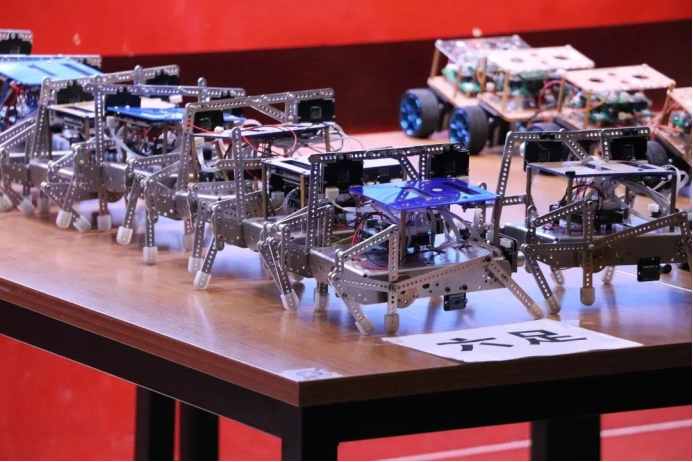


04 Intelligent handling
The intelligent handling project requires the participants to design an intelligent handling robot, which walks and transports materials in a designated industrial scene. The robot identifies the handling task by scanning the QR code, carries the corresponding colored materials from the shelf to the designated finished product area and places them accurately according to the task requirements. The competition not only examines the stable motion function of the robot, but also examines its ability to independently obtain task information and target recognition.
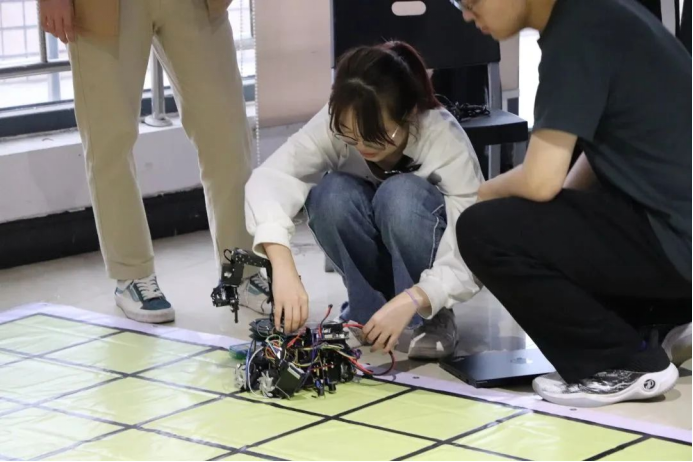
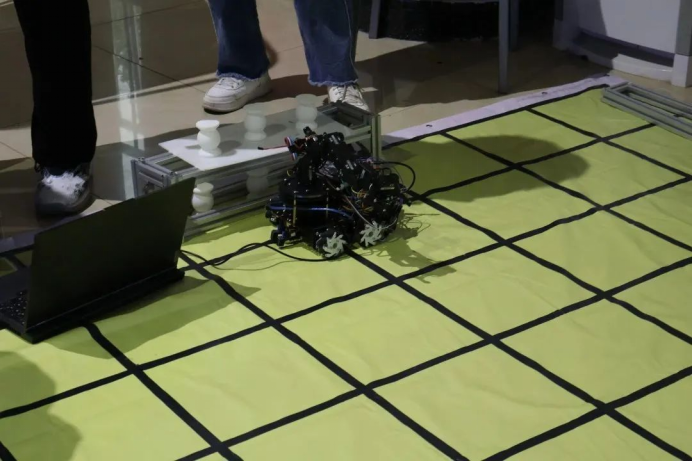
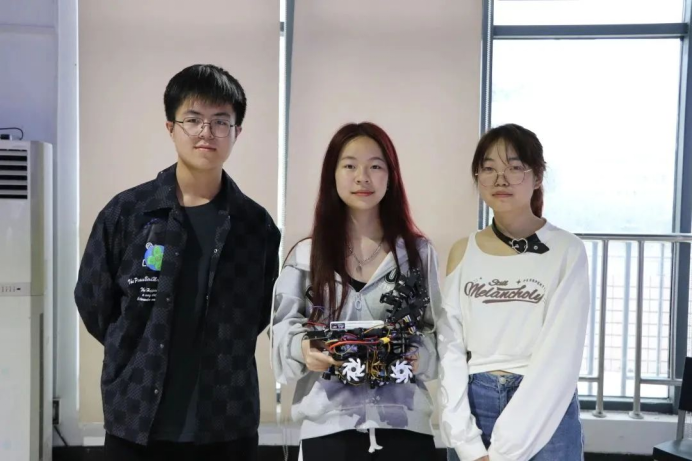
05 Two-wheel racing
The two-wheel racing requires contestants to design and build a two-wheel robot that can automatically maintain balance, using rotating wheels to maintain the robot's own balance and achieve autonomous tracking and object handling. In the competition, the balance is tested by placing ping pong balls. The robot uses infrared sensors to determine the direction of advancement, uses PID algorithm to control smooth travel through complex routes, and uses artificial sound and light to guide the robot into the garage. This places higher requirements on the acceleration performance and stability of robots.
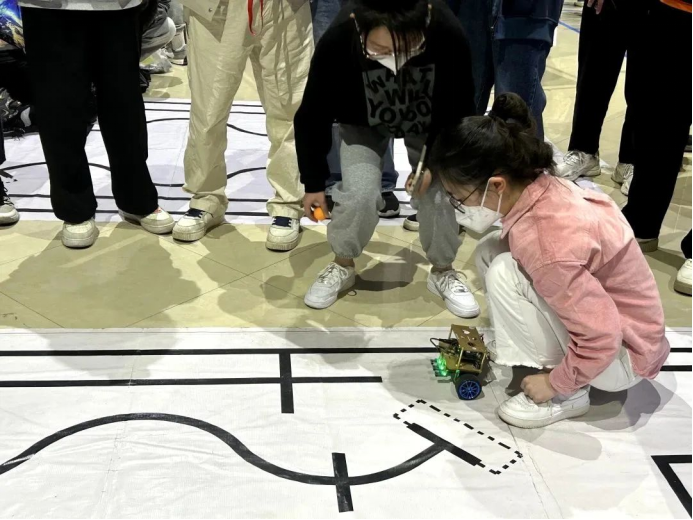
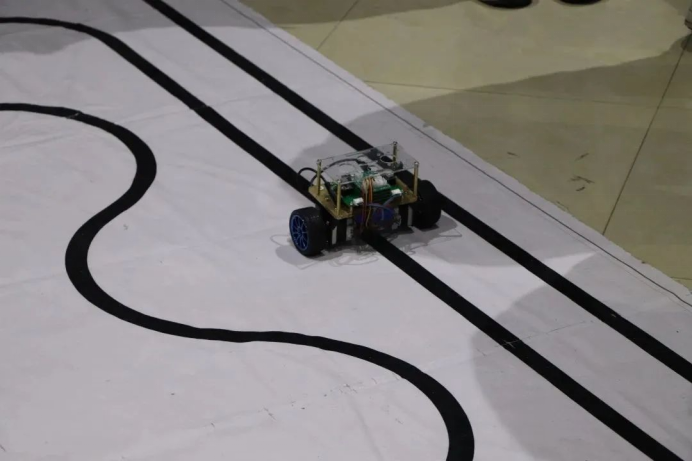
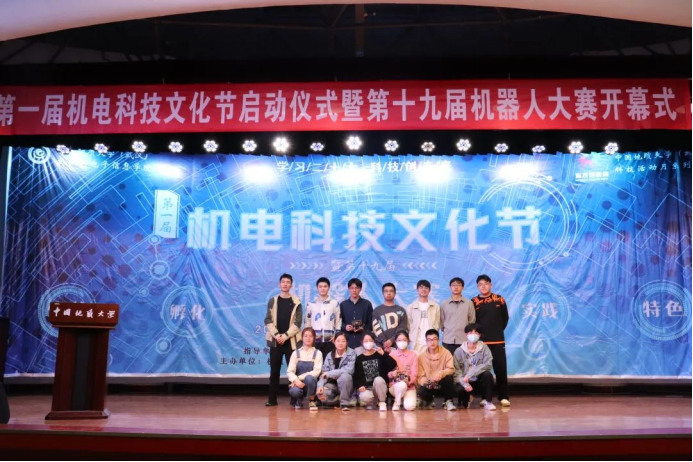
06 Innovative design event
The robot innovation event is relatively flexible, requiring contestants to independently design and build a new type of robot within the specified range. It mainly assesses the contestants’ innovation ability, rapid learning ability, and professional presentation ability.
